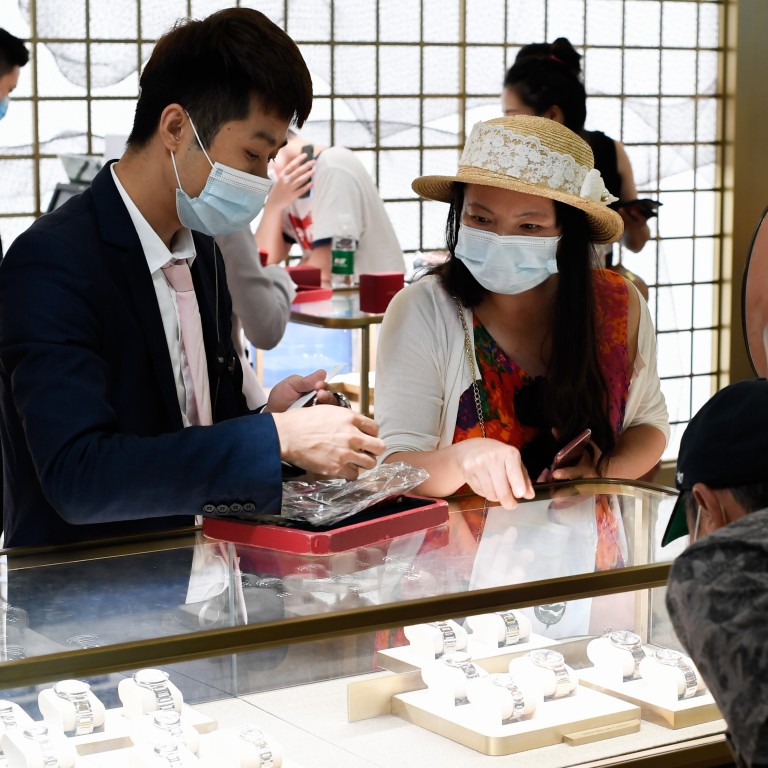
Industrial engine powered China’s disjointed economic recovery in July, but retail slump persists
- Industrial production in China grew by 4.8 per cent in July from a year earlier, emphasising its role as the main engine of economic growth
- But retail sales remained weak, with a contraction of 1.1 per cent, a worse performance than analysts had expected
China’s economy continued its rebound into the second half of 2020, but the pace of growth was slower than analysts expected, data released by the National Bureau of Statistics (NBS) on Friday showed.
July’s figure was behind expectations of 0.1 per cent growth, as per the consensus forecast of a Bloomberg poll of analysts.
The contraction continues the persistent gap between the industrial and consumption engines of the economy. Analysts have consistently warned that supply in China is outstripping demand, as the government struggles to get households to spend their money.
Industrial production, a measurement of manufacturing and mining output in the world’s second largest economy, continued on its four-month growth streak following a contraction in the first quarter, expanding by 4.8 per cent in July from a year earlier, the same pace as June.
This was worse than the consensus forecast of a Bloomberg poll, which had forecast 5.2 per cent growth, but nonetheless hammers home the fact that China’s industrial engine has recovered from the coronavirus shutdown ahead of other parts of the economy.
Within industrial production, manufacturing output grew by 6.0 per cent year-on-year, while mining shrank by 2.6 per cent.
Fixed asset investment, a cumulative measurement of expenditure on infrastructure, property and capital goods in the year so far, fell by 1.6 per cent over the first seven months of 2020. But it is edging closer to growth, improving from the 3.1 per cent decline in the first six months of the year, and 6.3 per cent in the first five. July’s drop was in line with expectations.
On a monthly basis, compared to a year earlier, fixed asset investment actually grew by 4.8 per cent, a product of a significant construction boom taking shape in China which has led to huge shipments of iron ore and coal and debt issuance in the private and public sectors.
This point is emphasised by a 46.1 per cent increase in the production of excavating and shovelling equipment in July.
“Looking ahead, we expect a renewed acceleration in infrastructure investment in the coming months as planned government bond issuance continues to ramp-up,” said Martin Rasmussen, China analyst at Capital Economics in a note.
But strong risks remain for the Chinese economy, including high debt levels, the searing rivalry with the United States on trade, technology and finance, as well as pockets of coronavirus outbreaks popping up with growing regularity around the country.
Some structural problems have accumulated in the country for a long time, there are systemic and periodic contradictions intertwined
“The financial sanctions could be done in a variety of forms, targeting banks or certain industries,” Yu said at a forum in Beijing, adding that the US could seize Chinese overseas assets if conflicts break out. “This possibility cannot be ruled out.”
At a press conference in Beijing on Friday, NBS spokesman Fu Linghui also pointed to the “complex and severe” situation facing global trade and the world economy, as well as China’s internal imbalances.
“Some structural problems have accumulated in the country for a long time, there are systemic and periodic contradictions intertwined,” Fu said.


